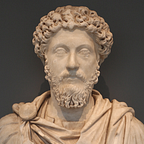How Teddy Roosevelt Disappointed Me
I’m a huge Teddy Roosevelt fan. I’ve read about a dozen books on him, watched documentaries, had Doris Kearns Goodwin autograph a book for me about Teddy, collect TR memorabilia, and quote him all the time. For the most part, I think he’s still relevant in American culture and one of the most interesting people to read about. But he’s human, and he’s not perfect. When you have people you admire, it can be hard to accept their faults.
In the summer of 2020, as most of you will recall, a national conversation was had about public history, specifically, statues. All across the United States, and even the world, statues of Confederate soldiers, Columbus, and others came down after the death of George Floyd and the Black Lives Matter protests.
In front of the Museum of Natural History in New York City, a statue of Theodore Roosevelt stood since 1940. The statue has been the topic of debate for years, but it finally came down is it was seen as racist and a tribute to colonization. Frankly, I was okay with it. I was happy to see statues that misrepresented history come down, and I felt this one of TR also misrepresented him, to a point.
As you can see, it’s weird. First, it doesn’t depict an event in his life. Second, he’s centered between an African and American Indian. He did visit Africa twice in his life, once as a kid, and once as the former President. But the statue is seen as a racial hierarchy, and probably represented the 1930s much more than people would want to admit.
The image of the American Indian is where my personal disappointment with TR is strongest. For years, I heard the quotation, “the only good Indians are dead Indians,” but only recently did I learn that it was Roosevelt who said it. As much as I wish I could explain it away, I can’t. It’s horrible.
He was a man of his time, but he was also ahead of his time on many other issues. For example, he supported women’s suffrage and women’s rights before the 19th Amendment even when his own sister did not support it. He was an advocate for the environment and was the first President to invite an African American to the White House, Booker T. Washington. But when it comes to the American Indian, he held the typical, patriarchal view of the day.
“He was a man of his times,” said Tweed Roosevelt, a great-grandson to Roosevelt and interim director of the Theodore Roosevelt Association. “In his presidency, he wanted the Native Americans to experience the American dream, but to do that by assimilating. The Indian population had been shrinking for a long time, and he believed that if they assimilated, that meant prosperity for everyone.”
The only way I know how to deal with this disappointment is to take it head-on — admit to it. I asked Doris Kearns Goodwin about this when I met her. She told me that we must view historical figures as people with moral bank accounts, where you add the good and subtract the bad. I still think Roosevelt’s moral bank account is in good standing. But his views on American Indians should not be ignored.
It’s hard to be disappointed with someone you admire. Recently, we’ve seen how some who invest their emotions in modern political leaders can ignore the obvious faults and cause much harm. As with the Lost Cause and Confederate statues, the human ego becomes too invested in the arc of history. It’s better to admit to the disappointment than to sweep it under the rug.
